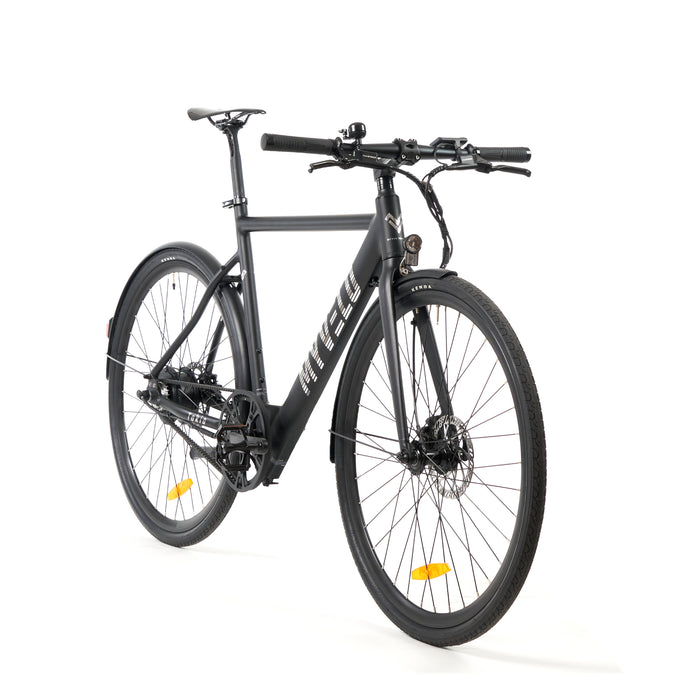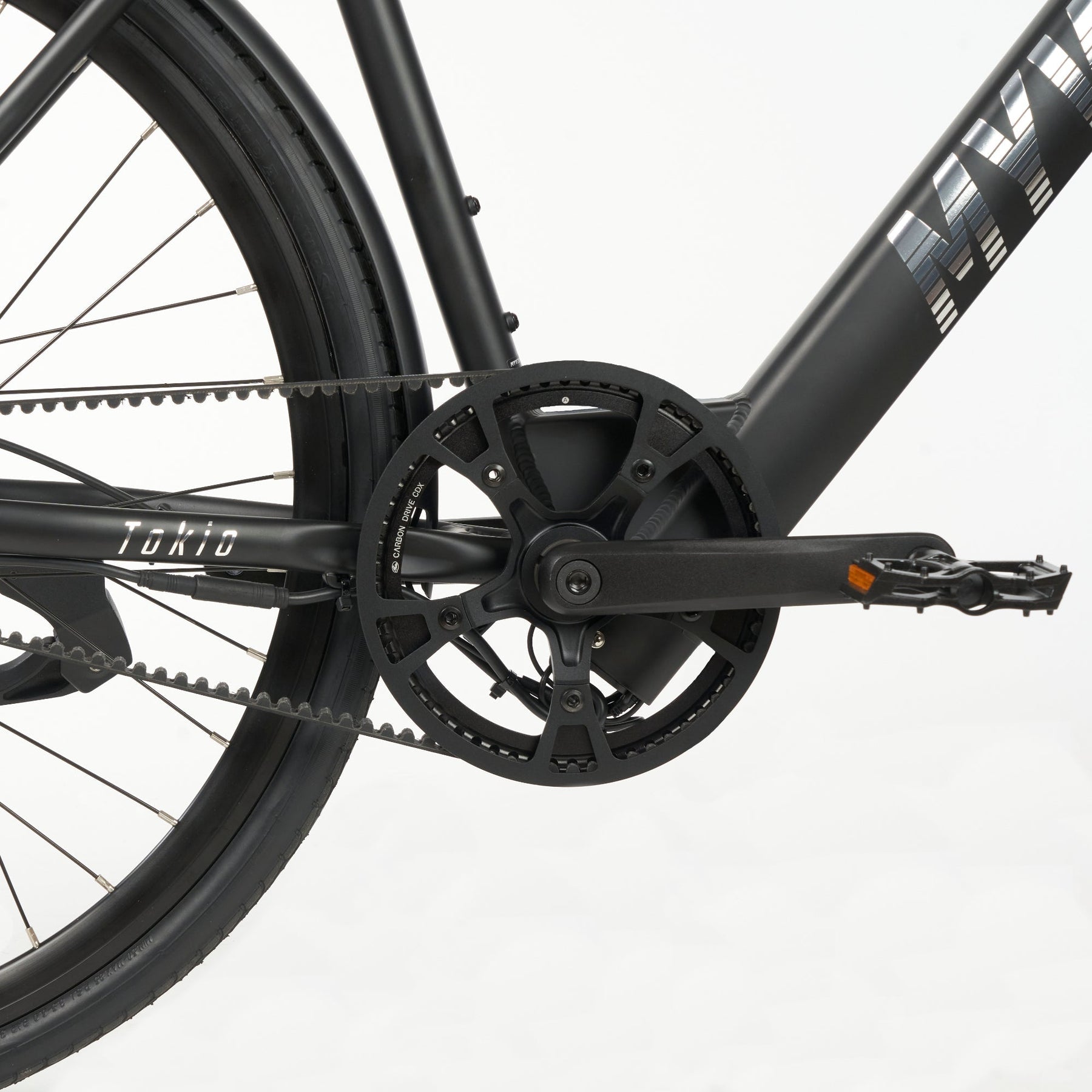
Tokio Singlespeed E-Bike
incl. FREE shipping & free returns

In recent years, belt drives have established themselves as a quiet, clean, and low-maintenance alternative to the traditional bicycle chain – especially for e-bikes. Anyone who rides an e-bike with a belt drive benefits from a durable and reliable system. But even though they require less maintenance than derailleur systems, a belt drive still requires maintenance.
Von Vincent Augustin |
3 minutes read time

In contrast to the traditional bicycle chain, the belt drive uses a toothed belt made of carbon fiber and plastic to transmit power from the bottom bracket to the rear wheel. This belt runs over specially shaped gears (pinions) and is grease-free.
Advantages:
No lubricant required
Very quiet in operation
Less wear and tear
Clean: No dirty pants or oil-stained fingers
Ideal for commuters, touring riders and everyday e-bike users

A belt drive requires significantly less maintenance than a chain – but you should still give it a minimum of attention, especially in rain, mud or dust.
How often? Every few weeks or after driving in adverse conditions. Especially in winter when there's snow, ice, slush, and road salt on the road.
How? With water, a soft brush, or a cloth. Use mild soap if necessary.
Important: Do not use aggressive cleaners or high-pressure cleaners!
After cleaning, a light spray with silicone spray can help improve the running properties of the belt:
Reduces quiet creaking or squeaking noises
Forms a thin, dry protective film
Holds dirt less strongly than oil or grease
🔧 Application: After cleaning, spray onto the dry belt, let it work for a short time, and wipe off with a cloth if necessary. Don't overdo it – just a touch is enough. Some belt drive manufacturers offer a maintenance spray as an alternative.
The belt must be tight enough, but not over-tensioned. Some e-bikes offer a tension scale or can be checked via a smartphone app. Alternatively, the "guitar string test" can help: if the belt sounds clear and tight when tapped, it's usually correctly tensioned.
Check regularly for foreign objects, damage, or visible wear. Small stones or branches can become wedged between the teeth and impair function.
No lubricants or oils! These will contaminate the belt and lead to premature wear.
No high-pressure cleaner: This can damage the bearings and the belt.
Do not bend or twist: Handle the belt carefully when removing or transporting it.
Remove salt residue: Rinse thoroughly after driving on salted roads, especially in winter.
A belt drive can easily last 20,000 km or more. However, there are signs that a replacement is necessary:
Frayed or damaged belt edges
The belt jumps over under load
Unusually loud noises despite care
Visible tooth wear on the gears
Changing the belt isn't rocket science, but it does require a bit more effort than changing a bicycle chain, as the frame needs to be opened or specially prepared.
Secure your bike (e.g. use a repair stand)
Remove the battery (for e-bikes)
Completely loosen belt tension (usually via dropouts or tensioning mechanism)
Many pulleys have a split frame or a special "belt window" in the rear triangle. This must be opened to remove the old belt and thread the new one.
💡 Note: If there is no opening mechanism, a belt drive cannot be easily retrofitted.
Remove old belt
Guide the new belt through the frame and place it over the gears
Make sure that it sits exactly on the teeth (not tilted or tense)
Re-tension the belt correctly – follow the manufacturer’s recommendations
Ideal is a slightly tight tension with noticeable resistance when pressing
If unsure: Visit a workshop or use a tension meter. Rule of thumb: The belt should have about 1cm of play, so it should be possible to push it down.
Turn the crank by hand: does the belt run smoothly without dragging or jumping?
Short test drive for inspection
The belt drive makes many things easier – but ignoring it completely risks premature wear. With a few simple steps (water, a brush, soap/dishwashing liquid, silicone spray), it stays quiet, clean, and efficient. The advantages at a glance:
Hardly any maintenance required
Longer service life
No oily hands, no dirty trouser legs
Ideal for everyday e-bikes
If you also know how to change a belt correctly, you can enjoy even more independence – whether when traveling, on tours or in everyday urban life.
Tip for frequent drivers: Have your vehicle inspected once a year – especially if you drive a lot of miles, on off-road terrain, or in wet conditions.